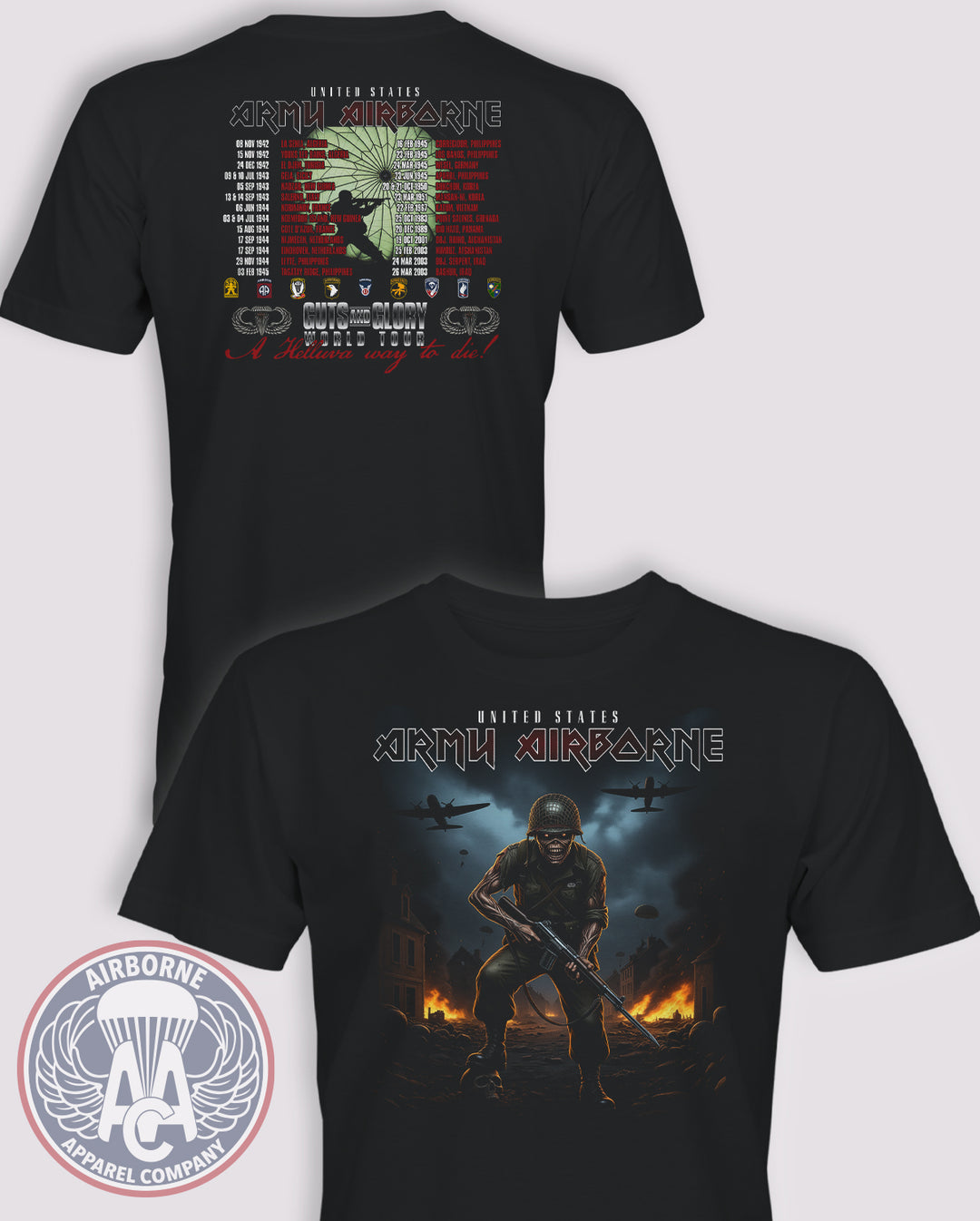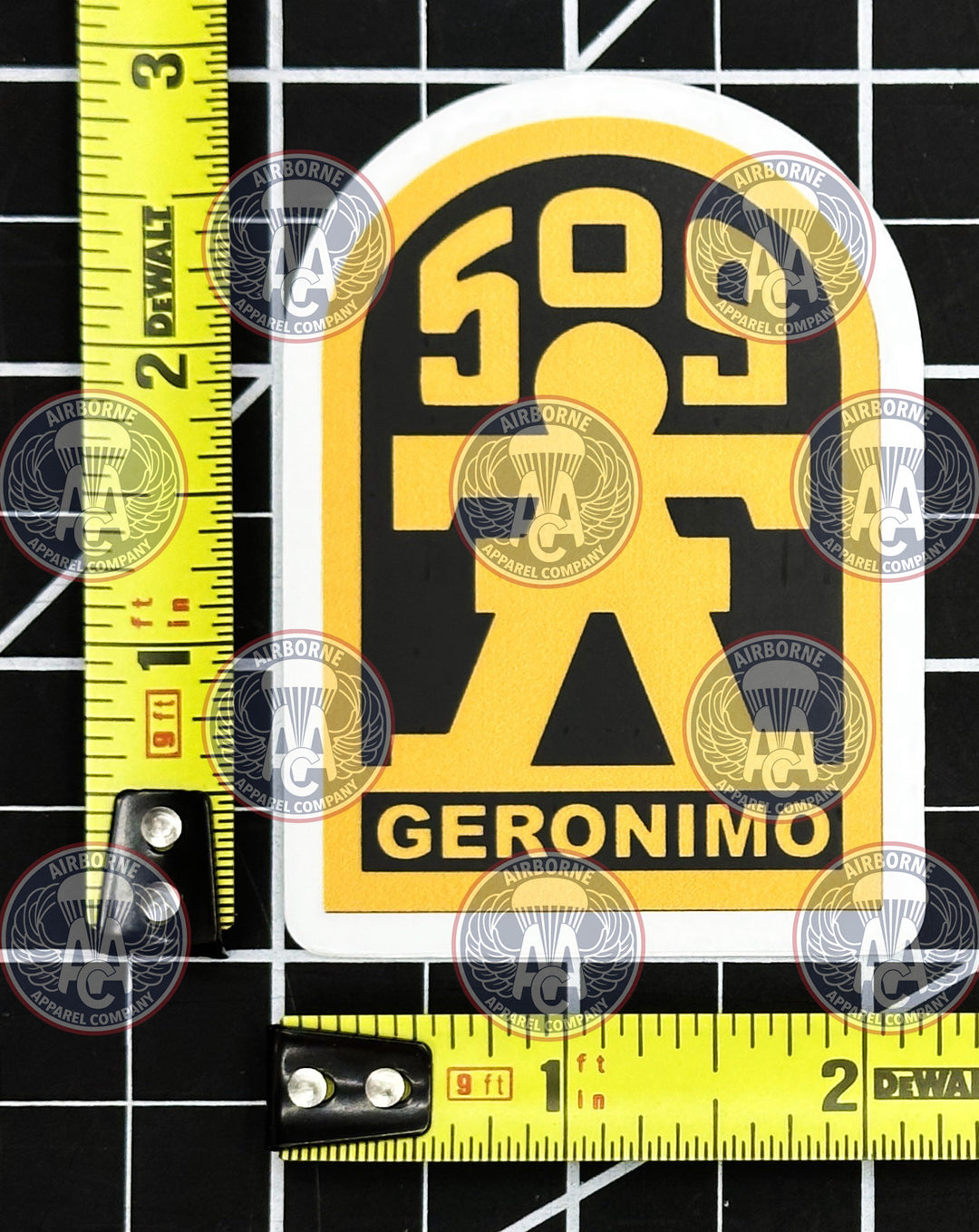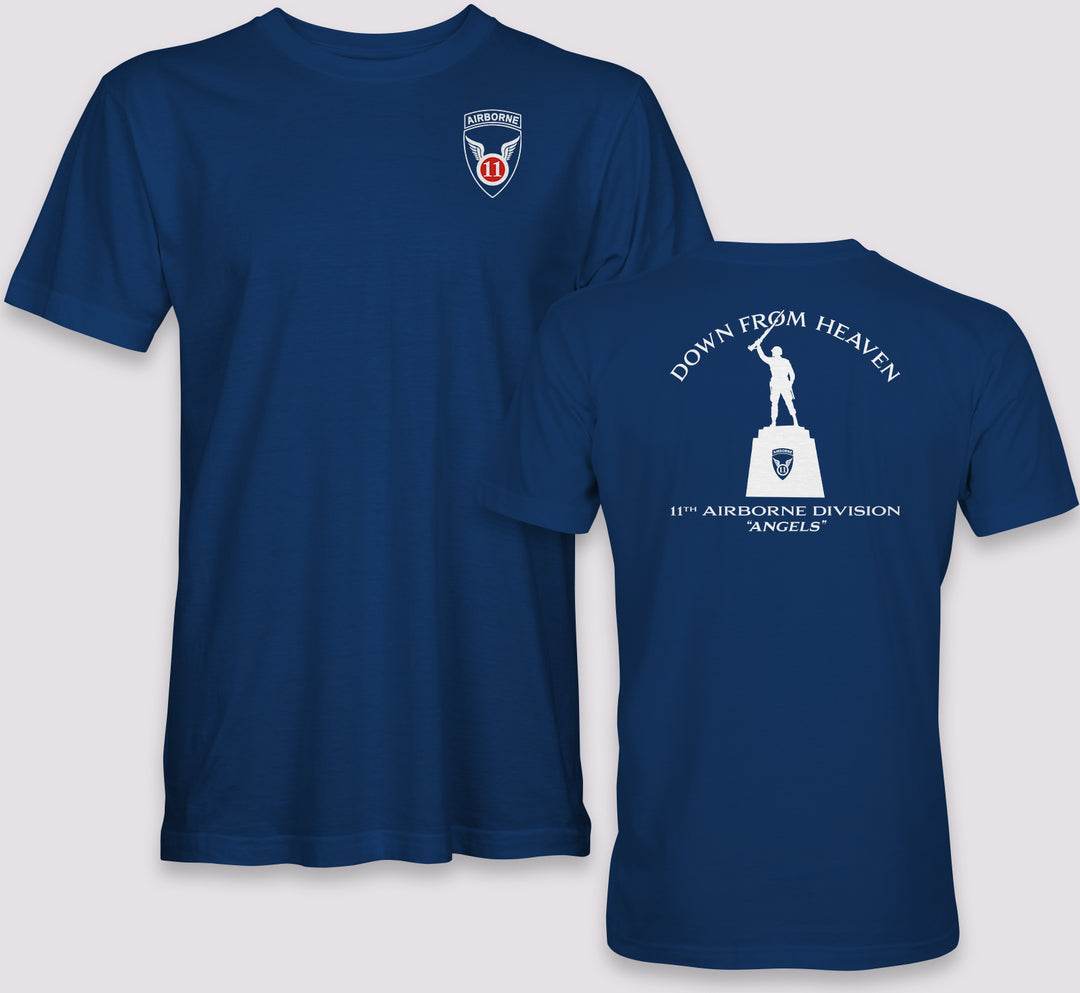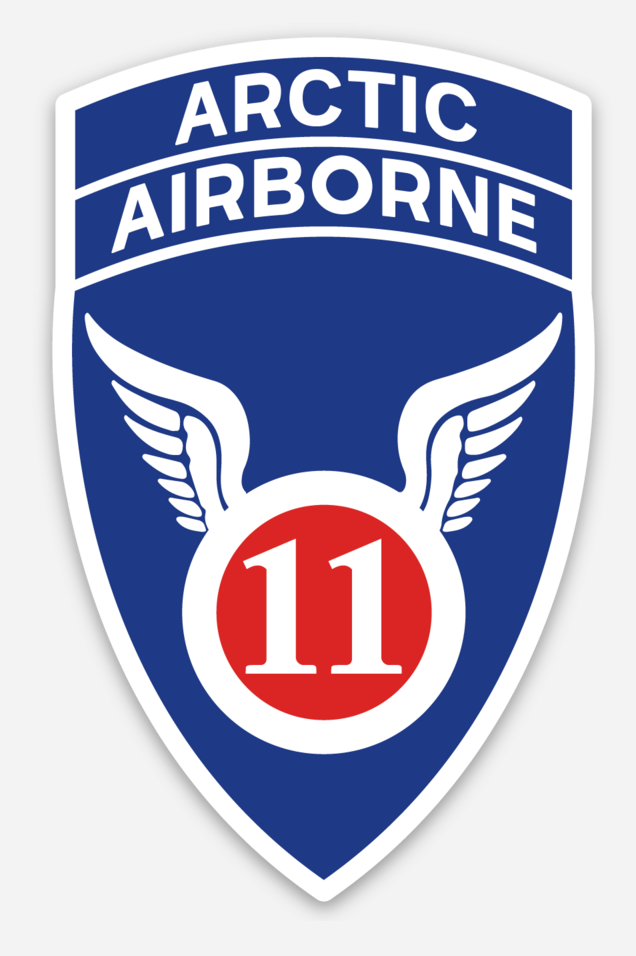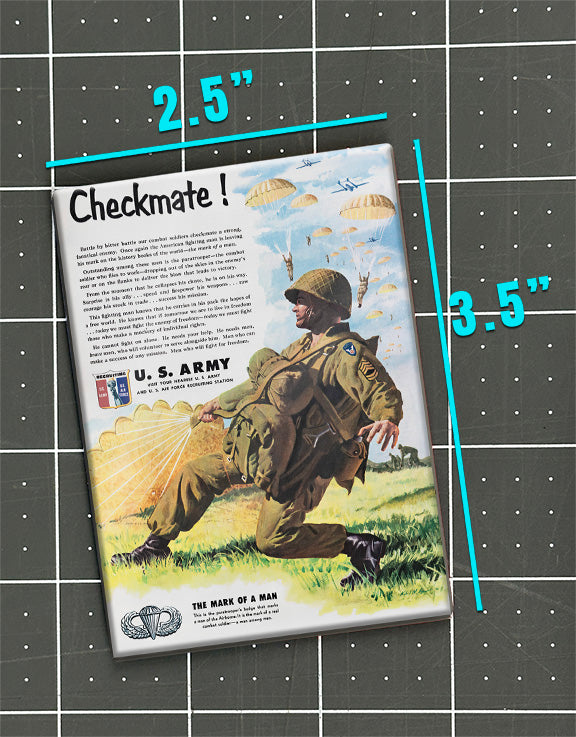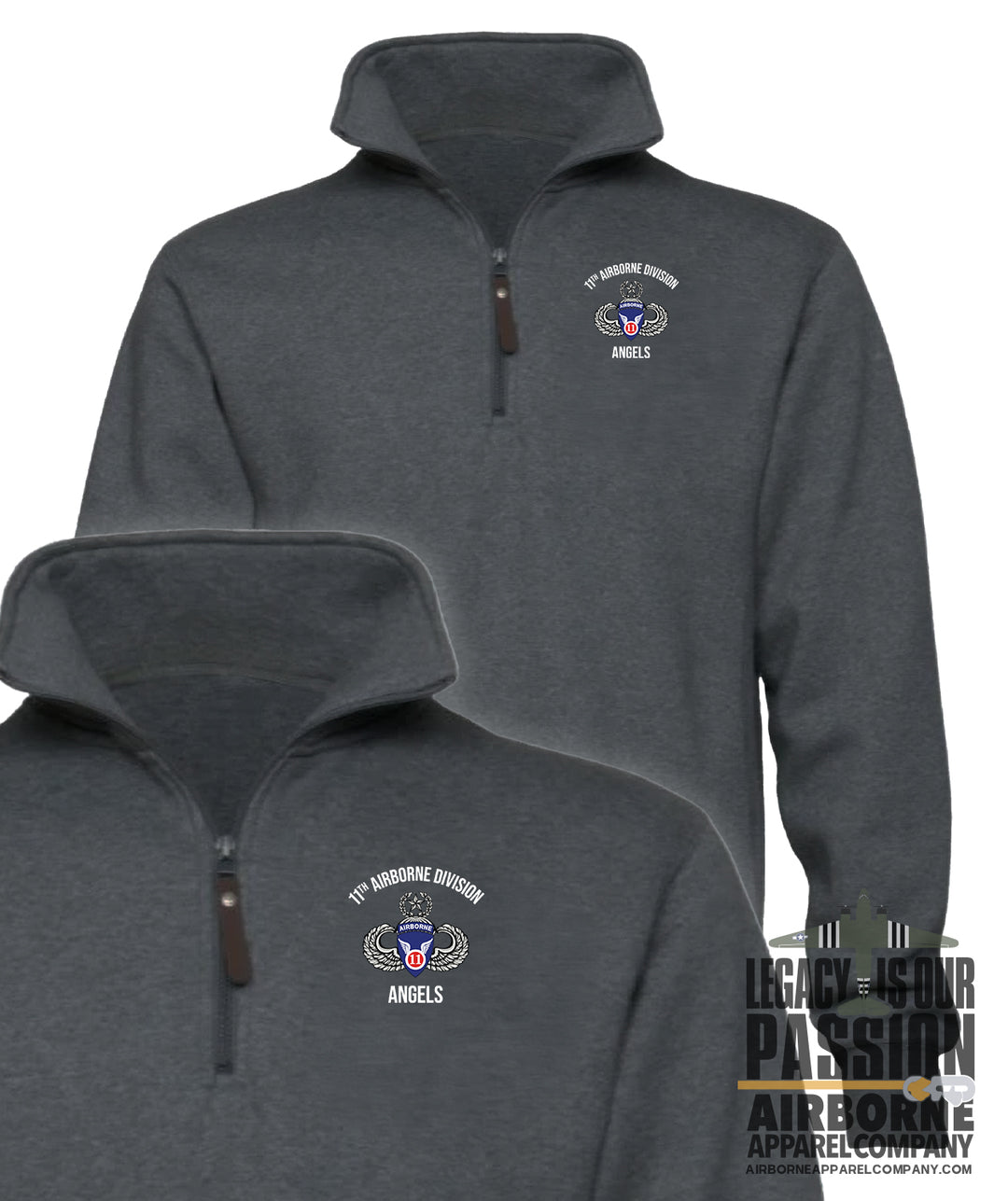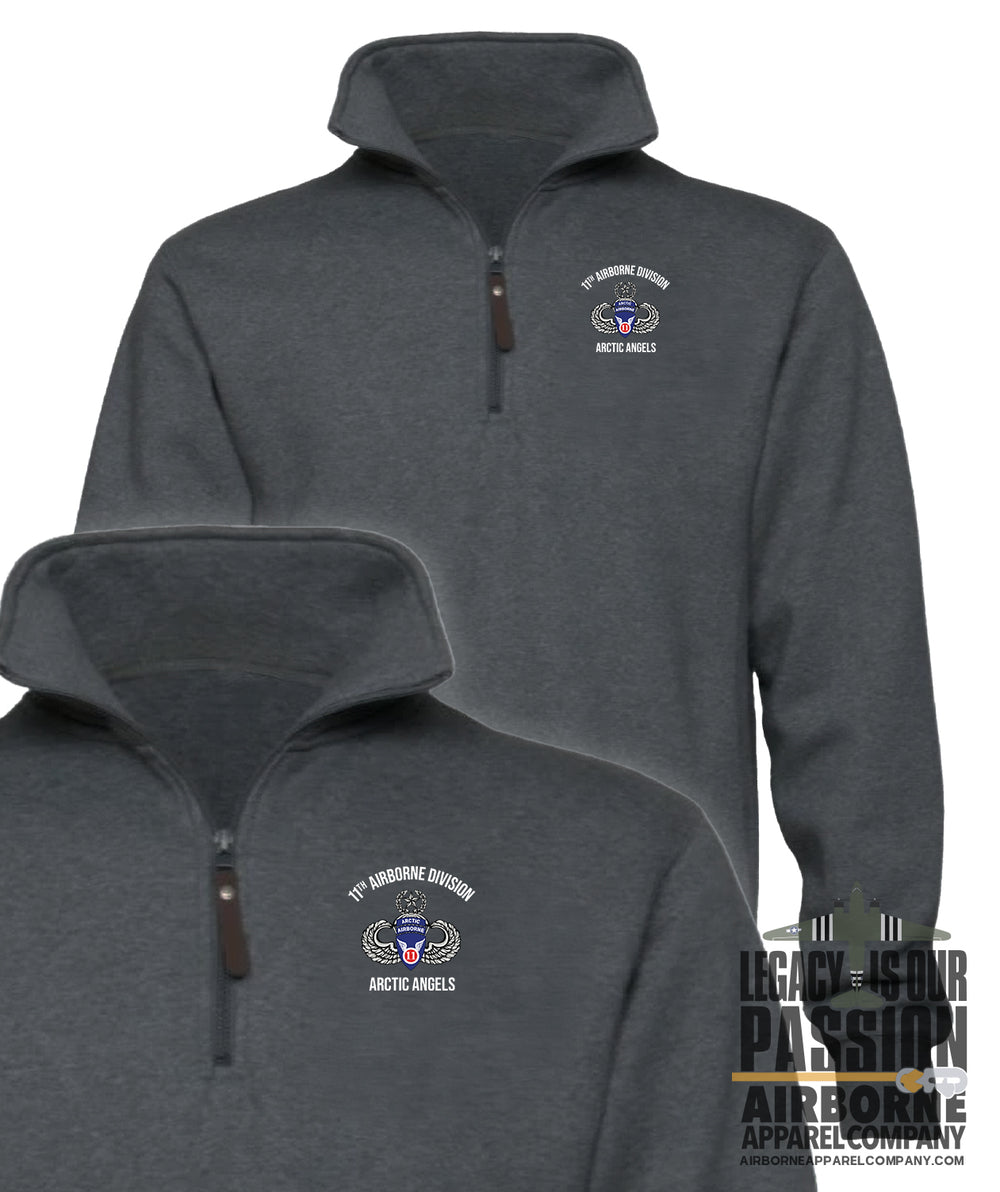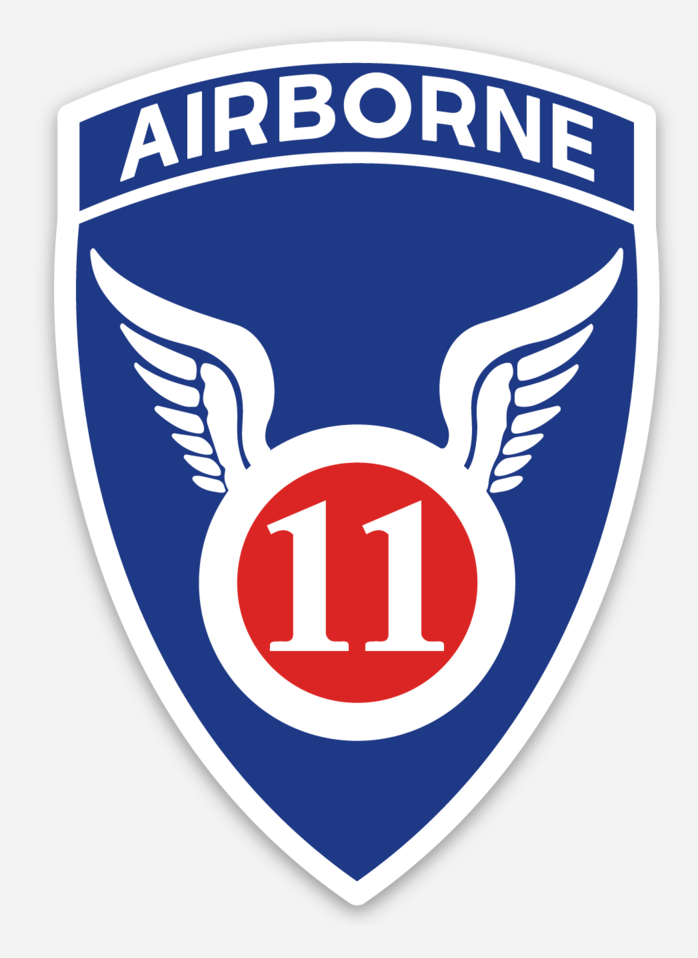The 11th Airborne Division—the storied “Angels” (today often called the “Arctic Angels”)—was formed in 1943 for Pacific-theater airborne operations, earning fame on Leyte and Luzon, the daring Los Baños rescue, and the final U.S. combat jump of WWII at Aparri (Operation Gypsy). After the war it helped shape postwar airborne forces, and the Army later used an 11th “Air Assault (Test)” division to pioneer helicopter airmobile/air assault doctrine that transformed modern warfare. On June 6, 2022, the 11th Airborne Division was reactivated in Alaska, unifying the state’s airborne brigades under one arctic-focused flag. Airborne Apparel Company is proud to offer reproductions and unique designs that celebrate the legacy of the 11th Airborne Division.
Activated in 1943 at Camp Mackall, North Carolina, the 11th Airborne Division formed around one parachute regiment and two glider infantry regiments—designed to strike deep, seize key terrain, and hold until linkup. Deployed to the Philippines, the division fought grueling campaigns on Leyte (mountain jungles, close combat) and Luzon, where its paratroopers and glider infantry broke through fortified terrain and shattered Japanese defenses.
The Los Baños Raid (Feb 23, 1945)
The division’s signature action was the Los Baños raid south of Manila—an audacious, daylight parachute-and-amphibious operation planned and led by elements of the 511th Parachute Infantry with Filipino guerrillas. Dropping at first light, cutting the wire, and exfiltrating by amphibious craft, the force liberated 2,000+ civilian internees with near-textbook precision—still cited as one of history’s most successful rescue operations.
Operation Gypsy, Aparri — Final U.S. Combat Jump of WWII (June 1945)
The 511th PIR spearheaded the jump at Aparri in northern Luzon—Operation Gypsy—to cut enemy escape routes in the Cagayan Valley. Executed mere weeks before the war’s end, it stands as the final U.S. combat parachute assault of World War II, underscoring the division’s aggressive airborne ethos to the last.
Occupation Duty and Korea Era
After Japan’s surrender, the 11th Airborne moved to Tokyo for occupation duties. During the Korean War, the 187th (then the 187th Airborne Regimental Combat Team, drawn from the 11th’s lineage) executed famed parachute assaults at Sukchon/Sunchon (1950) and Munsan-ni (1951). Although the full division did not fight as a division in Korea, its airborne regimental team kept the jump tradition alive in combat.
Europe, Inactivation, and the “Air Assault (Test)” Chapter
In the mid-1950s the division moved to Germany during the early Cold War, then was inactivated in 1958 amid Army reorganization.
A few years later, the Army resurrected the “11th” designation for a different but pivotal purpose: 11th Air Assault Division (Test) at Fort Benning. This experimental formation—equipped with fleets of UH-1 “Huey” and CH-47 helicopters—developed the tactics, organizations, and SOPs of airmobile warfare: vertical envelopment, air assault infantry companies and battalions, air cavalry/armed helicopter concepts, zone reconnaissance, LZ/PZ operations, and the air assault task force. In 1965, the personnel and equipment of the 11th Air Assault (Test) were used to stand up the 1st Cavalry Division (Airmobile), which proved the concept in Vietnam (Ia Drang and beyond).
Bottom line: the name “11th” is inseparable from the Army’s birth of Air Mobile/Air Assault—even though that test division was organizationally distinct from the WWII “Angels,” the two chapters together bookend the Army’s airborne-to-airmobile evolution.
Reactivation in Alaska (June 6, 2022)
Recognizing the strategic importance of the Arctic and the need for unified, cold-weather airborne expertise, the Army reactivated the 11th Airborne Division in Alaska—reflagging the state’s two brigade combat teams as Infantry Brigade Combat Team (Airborne) formations and aligning U.S. Army Alaska under the 11th’s colors.
Key hallmarks today:
-
Mission focus: Arctic warfare, airborne insertion, rapid crisis response across the Indo-Pacific and polar approaches.
-
Core units (examples):
-
1st Battalion, 501st Infantry Regiment (“Geronimo”) – storied airborne lineage.
-
3rd Battalion, 509th Infantry Regiment (“Geronimo”) – WWII pioneer lineage; Alaska-based airborne infantry.
-
1st Squadron, 40th Cavalry (Airborne) – reconnaissance and security, arctic airborne capable.
-
2nd Battalion, 377th Field Artillery (Airborne) – parachute-capable fires.
-
Enablers in engineers, signal, sustainment, and aviation tailored for cold-weather ops.
-
-
Identity: The division’s historic nickname “Angels” updated in common use to “Arctic Angels”, reflecting both heritage and environment.
-
Training: Emphasis on extreme cold, mobility over snow and ice, airborne insertions into austere LZs, and survivability where temperature and terrain are as formidable as any adversary.
Distinctive Insignia, Mottos, and Culture
-
Shoulder sleeve insignia: Winged angel motif—instantly recognizable airborne heritage.
-
Nicknames: “Angels” / “Arctic Angels.”
-
Ethos: Small-unit initiative, rapid vertical maneuver, and the adaptability to fight—from Luzon’s jungles to interior Alaska’s subarctic tundra.
Key Figures and Moments
-
MG Joseph M. Swing – divisional commander who shaped the “Angels” in WWII and oversaw operations culminating in Los Baños and Aparri.
-
511th PIR leaders – planners and executors of the Los Baños raid; innovators in joint/combined, time-on-target precision.
-
Air Assault pioneers – officers and NCOs of the 11th Air Assault (Test) who codified helicopter-borne maneuver, fire support coordination from the air, and the air assault task force model adopted Army-wide.
Honors and Campaigns (selected)
-
WWII: Leyte; Luzon (including Los Baños, Aparri/Gypsy); Philippine Presidential Unit Citations.
-
Korea-era lineage: 187th ARCT combat jumps and operations.
-
Modern: Campaign streamers carried forward by descendant and aligned units; today the reactivated division bears the mantle for Arctic-airborne excellence.
Why the 11th Matters Today
The Army’s airborne story starts with parachutes—but its modern vertical maneuver story is helicopters and (increasingly) integrated air-ground teams in extreme environments. The 11th Airborne Division uniquely ties those threads together: WWII airborne audacity, the birth of Air Assault doctrine, and a renewed arctic mission under one flag. In an era where cold-weather, long-range, and rapid-entry skills are at a premium, the Arctic Angels are purpose-built for the fight.
Airborne Apparel Company is proud to offer reproductions and unique designs that celebrate the legacy of the 11th Airborne Division.




